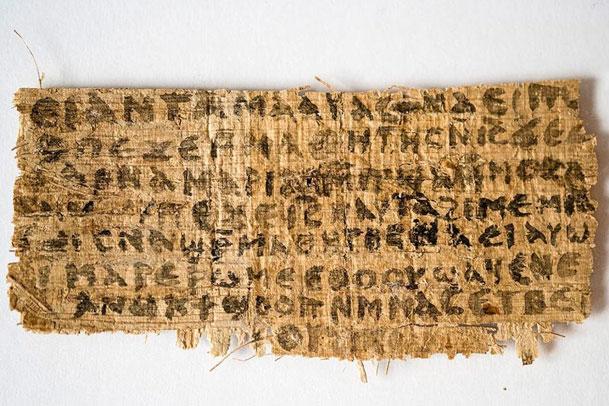Last week a small news item caught my attention that stated “Jesus was married“. As often with these type of articles, the main purpose of the headline was to attract the attention of the reader. The item referred to a small piece of papyrus that had been announced by professor Karen L. King in 2012 and used in a publication by her in 2014. The publication sparkled controversy and heated arguments until this day regarding whether the piece of papyrus, dubbed ‘GJW’ (Gospel of Jesus’ Wife) is a forgery. Intensive scientific testing followed and concluded that the piece was indeed ancient.
Nevertheless the claims of forgery remained persistent and in an issue of the New Testament Studies (vol. 61, no. 3, July 2015) an union of researchers explain why GJW can not be accepted as a genuine early Christian text. For what it is worth, King and her researchers date the text to the sixth to ninth century CE, so it is not to be considered that early anyway, taking in account the text dates from 600 to 900 years after the actual events (the life of Jesus).
The text of GJW is in Coptic and contains a phrase where he says ‘my wife’ and speaks about a female disciple. A Wikipedia article contains the whole text of the fragment as well as further information about the piece of papyrus.
Aside from whether the piece of text is or is not a forgery, there were claims made by King that would lead to the disaster that has happened (the dismise of papyrology, the reputation of a Harvard professor). Naming the fragment ‘Gospel of Jesus’ Wife’ was a nice way to catch attention of a larger audience, but the claim of the piece of papyrus representing a larger body of work comparable to other known gospels is uncalled for. If the snippet is authentic it is way too small to put a claim of a gospel to it. Prof. King should have known better: any text related to early christianity, be it the ‘official’ canon of the New Testament, let alone the apocryphal texts, like the Gospel of Thomas, are the products of countless revisions, translations and interpretations.
Only through carefully comparing sources like the four canonical Gospels (that share a similar sequence of events) from the New Testament one can make assumptions (not draw conclusions) about a historical Jesus and the embryonic stage of what eventually would become the religion of Christianity. Everything beyond that is pure speculation and has nothing to do with praticing science. Text fragments, like the one discovered at best are interesting from a perspective to learn about the evolution of Christianity and its teachings and how the moral idiom evolved over the centuries. Claims to give new insight to the life of Jesus are simply uncalled for. Maybe prof. King was out there to pt new life into her interest for ‘gender studies’ as her biography on the Harvard website presents.
Den Haag,
29 August 2015
revised: 5 september 2015
